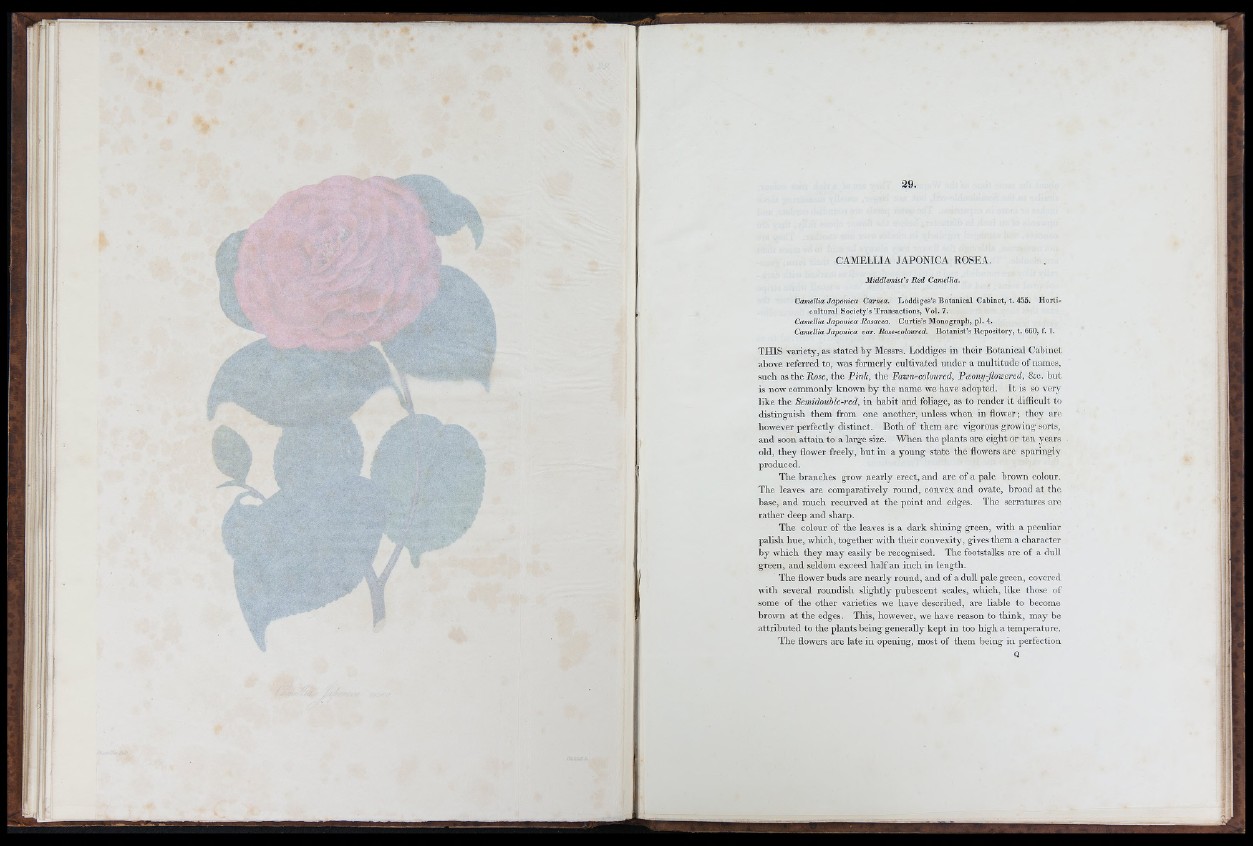
Ht
;,L -X « A ,
29.
CAMELLIA JAPONICA ROSEA.
M id d lem ist’s R e d Camellia.
Camellia Jap o n ica Carnea. L o d d ig e s ’s B o ta n ic a l C a b in e t, t. 455. H o r t i c
u ltu r a l S o c ie ty ’s T r a n s a c tio n s , V o l. 7.
Camellia Ja p o n ica R osacea. C u r tis ’s M o n o g r a p h , p i. 4.
Camellia Ja p o n ica v a r . Rose-coloured. B o ta n is t’s R e p o s ito ry , t . 660, f. 1.
THIS variety, ss, stated by Messrs. Loddiges in th e ir Botanical Cabinet
above referred to, was formerly cultivated under a multitude of names,
such as th e Rose, th e Pin k, th e Fawn-coloured, Fceony-flowered, &c. but
is now commonly known by th e name we have adopted. I t is so very
like the Semidouhle-red, in hab it and foliage, as to render it difficult to
distinguish them from one another, unless when in flower; they are.
however perfectly distinct. Both of them are vigorous growing sorts,
and soon atta in to a large size. When the plants are eight or ten years
old, they flower freely, b u t in a young state the flowers are sparingly
produced.
The branches grow nearly erect, and are of a pale brown colour.
The leaves are comparatively round, convex and ovate, broad a t the
base, and much recurved a t th e point and edges. The serratures are
rather deep and sharp.
The colour of th e leaves is a dark shining green, with a peculiar
palish hue, which, together with th e ir convexity, gives them a character
by which they may easily be recognised. The footstalks are of a dull
green, and seldom exceed h alf an inch in length.
The flower buds are nearly round, and of a dull pale green, covered
with several roundish slightly pubescent scales, which, like those of
some of th e other varieties we have described, are liable to become
brown a t the edges. This, however, we have reason to think, may be
attributed to the plants being generally k ep t in too high a temperature.
The flowers are late in opening, most of them being in perfection
Q